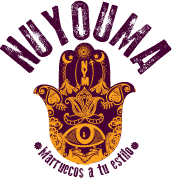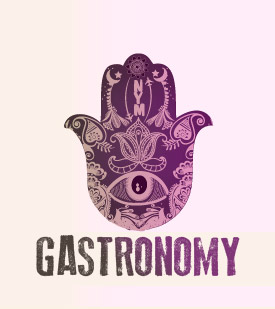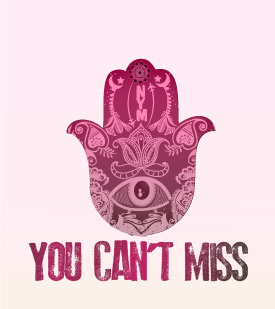Celebrations and important dates
Morocco has lots of celebrations and traditions. There are the religious ones, the national ones, the moussem or peregrination and the festivals and local celebrations that are related to agriculture. Any of them is a perfect opportunity for travellers to get to know the essence of Morocco.
As the majority of Muslim countries, the most important celebrations in Morocco are religious. The Muslim calendar is based on the motion of the moon and the Muslim year lasts 354 days, instead of 365. This means that every year their months are two weeks before ours, and that’s why the Festival of Lamb, the Ramadan or the Birthday of the Prophet change every year in our calendar. On the other hand, national holidays, like Independence Day (November 18th) or the European ones, like Labour Day (May the 1st) are based on Sun calendar.
Tradition is really important for Moroccans and it’s a huge honour to be able to keep the traditions and habits as their grandparents. That’s why they celebrate almost as their ancestors did centuries ago. Families gather together around the table, they bring presents, and dress with traditional clothes (djellaba for men and Kaftan for women), they go out and honour Allah.
However, nowadays Morocco has opened to new traditions and influences. Their religious celebrations are held at the same time as a variety of festivals, like music ones (like the Jazz Festival in Rabat or Gnaoua Music festival), cinema (national, African and European), performances and cultural events from other countries. These are specially held in Rabat, Marrakech and Casablanca.
Furthermore, Moroccans also pay tribute to nature- as their country has many natural wonders- and they consider that the blossoming of almond trees or the cherry season has to be celebrated. Dates related to agriculture and farming are also important and often celebrated. For example, the Honey Festival or the Moussem of Roses and they want to show their gratitude to God for its work.
It’s probable that you will be able to experience these celebrations when you travel there, and it will be a perfect opportunity to get to know the real Morocco.
Famous celebrations
FEBRUARY:
Ben Aïssa Moussem (Meknès)
This festival brings together the Aïssawa Brotherhood in the Sidi ben Aïssa mausoleum, who was the founder of this belief. Peregrines coming from all country sleep in huge tents around Merknès for several days, during the Birthday of the Prophet. The festival activities include music and mystic dancing, processions and horse shows.
MARCH:
Almond tree festival
Tafroute is a small town located in the south of Atlas Mountains that, once a year, becomes the centre of attention in Morocco. It takes place at the end of February, when almond trees bloom in the Ameln Valley and its people celebrate with concerts, street markets, folkloric dancing and street performances.
APRIL:
Jardin’Art in Marrakesh
The Jardin’Art is an ode to nature that takes place once a year in April, headed by the Queen. There are several events related to botany and flora. Besides never-ending gardens, flower shows and activities, you can find live music, traditional dancing and craftwork.
MAY:
Rose Festival (Kelaa M’Gouna)
May is the month of roses in Morocco, at least in Kelaa M’Gouna, an oasis in the Valley of M’Goun River, known for cultivation of Damask Rose. The celebration lasts three days, and it commemorates collecting of the rose with a shower of petals, Berber music, chants and the traditional dance of Ahwash.
Mawazine Festival in Rabat
A macro-festival of music takes place in the capital city. It has the support of the King although it is a secular event that has an occidental character. Every spring two million people meet in the Mawazine to see performances of some of the most famous artist around the world like Christina Aguilera, Shakira, Rihanna, Jennifer Lopez or Pitbull.
JUNE:
Gnaoua World Music Festival
Hundreds of artists take part in the most important traditional music festival of the country, which takes place the last week of June. Gnaoua World Music Festival started as a modest meeting point between foreign artists and mystical Gnaoua, and nowadays is an extraordinary music festival.
Sefrou Cherry Festival
It takes place in Sefrou, a town near Fez and it was registered as World Intangible Heritage in 2012 by UNESCO. The festivity takes place at the beginning of June, and it shows parades, reginal dancing, and the election of the Cherry Queen, a beauty contest where women from all the country participate.
Festival of World Sacred Music
This musical and spiritual event takes place in the oldest Moroccan town: Fez. The festival transforms the millenary Place of Bab Boujloud and the palace of Bab Makina into luxurious places. The festival is like a journey to different regions and ethnic communities, in the last years there has been an introduction to flamenco and youthful music.
L’Boulevard Festival (Casablanca)
This festival is actually a contest that is seen as a platform for young Maroccan musics and also from other parts of Africa who want to be known. The Boulevard has also become the mouthpiece of the Nayda Movement, the young Moroccan revolution whose flag is rap and national hip-hop.
JULY:
National Popular Arts Festival of Marrakesh
It is registered as World Human Heritage by UNESCO and it is a massive event that spreads all over the city. The most beautiful corners of Marrakesh are full of music, dancing and colour, such as the El Badi Palace, or Le Village. The festival takes place every July since 1959 and its goal is to show and enjoy cultural heritage of the country.
Asilah Arts Festival
Every summer, the town of Asilah become a big open canvas where painters from all around the world make colourful murals on its walls. During the celebration you can also enjoy live concerts, theatre, art activities both for adults and children and equestrian performances.
Alegria Music Festival of Chefchaouen
For more than a decade the Blue City has celebrated a meeting between musicians that takes place every year. The Moroccan rhythms get mixed with the Latin, flamenco and African ones. In the Alegria Festival is not difficult to see artist from Cuba, Lebanon or Cape Verde neither the top Spanish flamenco dancers. You can also find photography expositions, young talents contests, traditional fashion shows and craftwork markets.
OCTOBER:
Essaouira’s Andalousia-Atlantic festival
Known as a multicultural celebration, this even has been taking place every October in Essaouira for more than ten years. Its goal is to promote Andalusian heritage of Morocco. Besides the Al-Andalus music, you can also see some dancing, craftwork, gastronomy and literature.
Marrakesh Biennial
Morocco also opens its doors to contemporary art, whose artists have the chance to show their last artwork in this Biennial. Every two years in October, you can see all types of artistic offers inside and outside, such as art performances, video-art, art installations and artistic pieces.
DECEMBER:
Marrakesh International Film Festival
In contrast to millenary celebrations, Morocco also invests on modern festivals like the International Film one, which takes place every year since 2000, sometime between November and December and has become an important cultural meeting.
Religious celebrations
The Ramadan
The most important date for the religious believers in Morocco is the Ramadan, which takes place in the ninth month of Islamic calendar. During 30 days men and women purify themselves through fasting and other practises- such as abstention- from sunrise to sunset.
Eid Al-Adha, or The Festival of Sacrifice
The sacrifice feast takes place in the last month of the Muslim calendar, a festivity that commemorates Abraham’s sacrifice. It’s the most important celebration after Ramadan, and it lasts two days, although preparations begin weeks before. In these days people go shopping, like here before Christmas. The only difference is that in Morocco there will be lambs in towns ready to be sacrificed at the same day.
Mawlid, Birth of the Prophet
The same way as Christians celebrate the birth of Jesus, Muslims commemorate the Mahoma’s and it takes place on the 12th day of the third month and also the night before. In Morocco it’s traditional to wear formal clothes, to spend the day with family and friends, to pray, to read poetry, and have a special meal. The night before, the mosques get enlightened and people sing and recite on a very moving celebration.
Eid Al-Fitr, or the Festival of Breaking of the Fat
When the ninth month of the Muslim calendar ends, the Ramadan also finishes and the Islamic community celebrates that event during the first three days of the following month (el Shawwal). They wear new clothes (the men where white as a symbol of purity), they have lunch with family, they pray and the children get presents. The traditional greeting is “Eid Mubarak” which means Blessed Eid.







